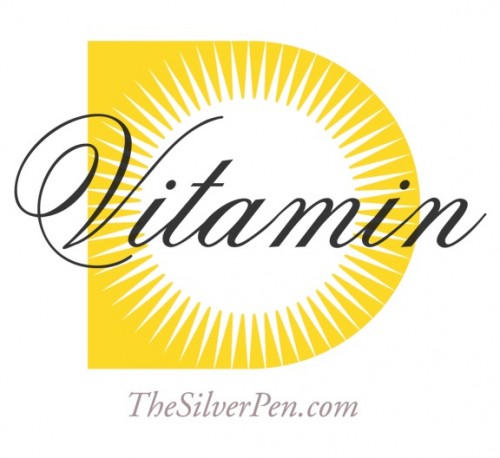At lunch with an enlightened girlfriend recently, she was touting the transformative impact of Vitamin D. Between this conversation and my doctor’s recommendation that I start taking a vitamin D and calcium combo, I decided that the universe was speaking to me and that it would be a good idea to listen.
Why take vitamin D? Vitamin D is required for the regulation of the minerals calcium and phosphorus found in the body. It also plays an important role in maintaining proper bone structure. According to a 2009 study published in the Archives of Internal Medicine, people with low levels of vitamin D, which helps to regulate the immune system, are more susceptible to catching colds. Additional reasons to take vitamin D include:
- Promotes calcium absorption and aids in bone growth and remodeling. In fact, the reason to take vitamin D and calcium together is because vitamin D is necessary for calcium use.
- Modulation of cell growth
- Neuromuscular and immune function
- Reduction of inflammation
- Prevent rickets
How much vitamin D? What doctors and dermatologists can’t quite agree on is the amount of vitamin D we actually need. The traditional recommendation is 200 to 600 international units (I.U.) every day (e.g., multivitamins typically contain 400 IU’s). However, new research suggests that that amount is not enough. Experts now suggest taking a 1,000-IU supplement on top of a multivitamin. This is what I’m taking.
Where to find vitamin D? While vitamin D is found in foods such as fatty fish, eggs, and fortified dairy products, it’s nearly impossible to fulfill daily requirements through diet alone. The best way, experts say, is vitamin D supplements.
Vitamin D is known as the “sunshine vitamin.” Isn’t that sweet? Now, sun exposure is indeed an easy way to get vitamin D. Exposure of the hands, face, arms, and legs to sunlight two to three times a week for about one-fourth of the time it would take to develop a mild sunburn will cause the skin to produce enough vitamin D. The tricky thing is that the necessary exposure time varies with age, skin type, season, time of day, etc. Oh and there’s that pesky issue of skin cancer. I tend to avoid the sun in general and focus on supplemental and dietary sources of vitamin D. Below are some sources of dietary vitamin D:
- Canned tuna: A 12.5-ounce can of light tuna in oil (drained) has 863 IU (international units). The 3-ounce can has 229 IU.
- Salmon: A 3.5-ounce serving contains 250 to 400 IU.
- Sardines: A can contains 178 IU per serving (after FBC, I started loving – absolutely loving! – sardines. So weird after an aversion to them for my entire life!).
I’ll keep you posted on how I do after an actively engaged effort to consume vitamin D and calcium. Fingers and bony toes are crossed!



A person deficient in Vitamin D will not absorb calcium effectively. Vitamin D levels are measured by the serum 25-hydroxyvitamin D3 test. Many medical experts feel that optimal blood levels of Vitamin D should run between 50-80 ng/mL or 125-200 nmol/L
Chemo treatment may affect bone loss resulting in ostepenia or osteoporosis. Please request dexa if the doctor doesn't suggest.
Keep bones strong and fracture free.
Sandi
Osteoporosis Advocate
Thanks so much for your great input, Sandi!
I'm taking 5000 IU's per day and my vitamin D sits at the optimal level of 175 nmol/L. I live in the Pacific Northwest where there is s lot less sunshine than other areas of N.A. so the higher intake is important. The more recent studies I've read recommend an intake of 2000 to 3000 IU per day post cancer – which is in keeping with (multi vitamin 400 IU& 1000 IU per day) plus all your lovely sunshine!
All the best Hollye and thank you for getting the word out! There are studies being done linking Vitamin D to cancer prevention and the prevention of recurrence….. in the meantime I'm jumping the gun as there doesn't seem to be a down side!
Sounds like a great plan, Kim! Are you also taking calcium? Thanks for your comment, as always!
Calcium 600mg
Magnesium 300 mg
Per day.
THanks, Kim!